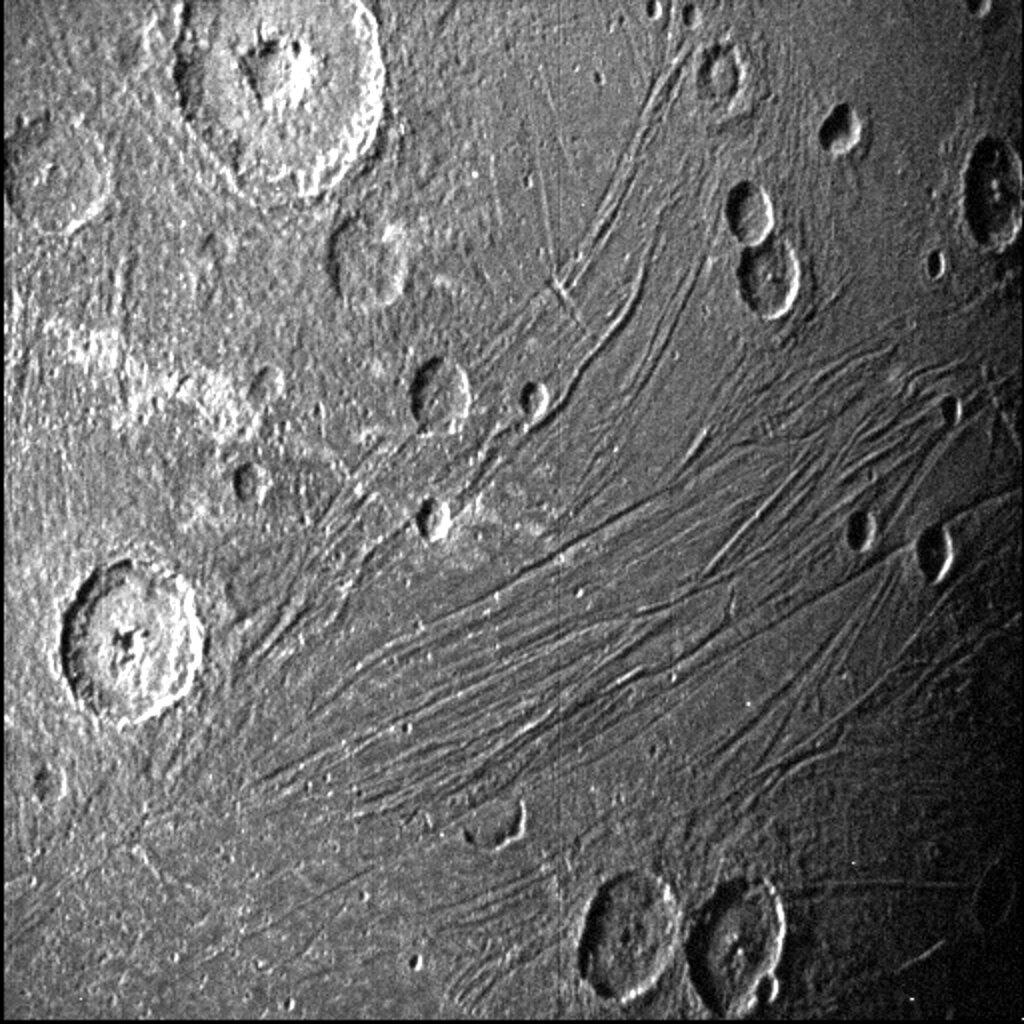 This image dated June 7, 2021 made available by NASA shows the Jovian moon Ganymede as the Juno spacecraft flies by. (PHOTO / AP)
This image dated June 7, 2021 made available by NASA shows the Jovian moon Ganymede as the Juno spacecraft flies by. (PHOTO / AP)
LOS ANGELES - NASA's Juno mission has for the first time detected mineral salts and organic compounds on the surface of Jupiter's moon Ganymede, NASA said on Tuesday.
The finding suggests an underground ocean brine is reaching the crust of the icy world, according to NASA.
Data for this discovery was collected by the Jovian InfraRed Auroral Mapper (JIRAM) spectrometer aboard the spacecraft during a close flyby of the icy moon.
ALSO READ: NASA documents how Jupiter's lightning resembles Earth's
 This image dated June 7, 2021 made available by NASA shows the dark side of the Jovian moon Ganymede as the Juno spacecraft flies by. (PHOTO / AP)
This image dated June 7, 2021 made available by NASA shows the dark side of the Jovian moon Ganymede as the Juno spacecraft flies by. (PHOTO / AP)
Larger than the planet Mercury, Ganymede is the biggest of Jupiter's moons and has long been of great interest to scientists due to the vast internal ocean of water hidden beneath its icy crust.
On June 7, 2021, Juno flew over Ganymede at a minimum altitude of 1,046 kilometers. Shortly after the time of closest approach, the JIRAM instrument acquired infrared images and infrared spectra of the moon's surface.
READ MORE: NASA unveils newly returned carbon-rich asteroid sample
The JIRAM data of Ganymede obtained during the flyby achieved an unprecedented spatial resolution for infrared spectroscopy. With it, Juno scientists were able to detect and analyze the unique spectral features of non-water-ice materials, including hydrated sodium chloride, ammonium chloride, sodium bicarbonate, and possibly aliphatic aldehydes, according to NASA.


